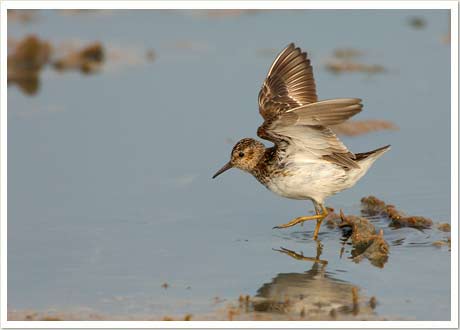|
| Least Sandpiper |
PHOTO: 1 2 |
 |
|
 |
 |
| The smallest "little brown sandpiper," the Least Sandpiper can be told by its dark brown plumage and yellow legs. They prefer short salt marshes and are usually seen on the harbor side, though some are also found on the beachfront. Least Sandpipers stop at Plymouth Beach while migrating from Canada to the southern United States and Caribbean. You can also see some in spring on their northward migration. |
|
|